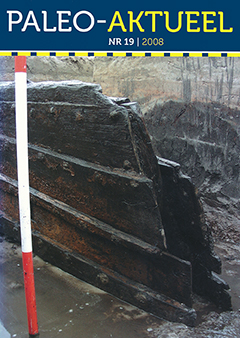IJzertijd-bewoning in een dynamisch landschap gevormd door Vecht en Angstel (Utr.)
Samenvatting
Iron Age occupation in a dynamic landscape formed by the rivers Vecht and Angstel (province of Utrecht). The Vecht area lies in the Western Netherlands between the cities of Amsterdam and Utrecht. In this article physical geographical, palaeoecological and archaeological research is combined to achieve a broader view of life in the Iron Age in this area. The oldest river course is the Angstel, formed around 2900 BP. The earliest archaeological remains found in the Vecht area are dated to 2600 BP. The Vecht area was a dynamic landscape in the Iron Age. The Angstel was forming crevasse complexes by filling up lakes; in this way high sandy crevasse ridges were formed. On these ridges and on the higher natural levees, settlements were built in the Iron Age. Evidence from excavations shows that Iron Age people in this area operated an economy based on cattle breeding, arable farming and hunting. The Vecht area had many different ecological zones, lying in the transition zone between the brackish Oer-IJ estuary and the freshwater area of the Rhine, with a variety of exploitation zones. Two avulsions started around 2300 BP, and this was the beginning of the formation of the river Vecht. The archaeological data show that from the beginning of the Roman Period (around 2000 BP) up till the 11th century AD the Vecht area was not inhabited. One explanation for this is that the Vecht ended its fluviatile activities and the landscape drowned. But this cannot be the full explanation since the fluviatile activities of the Vecht ended just around 1700 BP. An alternative explanation is that the establishment of the limes along the river Oude Rijn made the Vecht area a buffer zone where Germanic tribes were not allowed to dwell. And after the Roman period the area was not suitable to live in anymore because of the drowning of the landscape.

